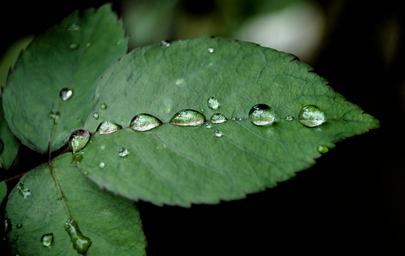Introduction
Air purifiers have become essential household devices, especially for those who are sensitive to allergens and pollutants. However, just like any other appliance, they can encounter issues that may hinder their performance. Understanding how to troubleshoot your air purifier effectively is crucial. This guide aims to provide you with expert insights on resolving common problems, understanding error codes, and maintaining optimal performance. By the end of this article, you'll feel empowered to tackle any issues that arise with your air purifier.
Troubleshooting Your Air Purifier Like a Pro
Understanding Common Issues with Air Purifiers
Air purifiers are designed to improve indoor air quality by filtering out dust, smoke, pollen, and other particles. However, various factors can affect their efficiency.
Common Problems and Solutions
Reduced Airflow
If you notice decreased airflow from your air purifier, it may be due to a clogged filter. Regularly check and replace filters as needed.
Unusual Noises
Strange sounds can indicate loose parts or debris inside the unit. Open the device carefully and inspect for foreign objects.

Red Light Indicators
A red light on your air purifier often signifies a filter change is necessary or an internal fault. Consult the user manual for specific meanings.
Persistent Odors

Power Issues
Ensure that the device is plugged in correctly and check for any blown fuses or tripped circuit breakers.
Ineffective at Removing Particles
If your air purifier struggles to eliminate pollutants effectively, it might be time for a more powerful model or additional units in larger spaces.
How to Maintain Your Air Purifier
Regular Cleaning Practices
Keeping your air purifier clean ensures it operates efficiently:
- Dusting External Surfaces: Regularly wipe down the exterior with a damp cloth. Cleaning Pre-Filters: Depending on the model, pre-filters can often be washed. Replacing HEPA Filters: For most models, HEPA filters should be replaced every 6-12 months. Checking Carbon Filters: These should also be checked periodically as they absorb odors over time.
The Importance of Filter Maintenance
Proper maintenance of filters is paramount for optimal air purification:
- Clogged filters restrict airflow leading to reduced efficiency. Dirty filters can release trapped particles back into the air. Timely replacements ensure that allergens are effectively captured.
Air Purifier Error Codes Explained
Many modern air purifiers come equipped with error codes indicating specific issues:
| Error Code | Meaning | Solution | |------------|-------------------------------|----------------------------------| | E1 | Filter needs changing | Replace filter | | E2 | Unit malfunction | Reset device | | E3 | Sensor issue | Clean sensor | | E4 | High humidity alert | Move unit away from moisture |
Understanding these codes helps in addressing issues promptly rather than guessing what might be wrong.
What Does the Red Light Mean on My Air Purifier?
A red light often indicates several potential problems:
- The need for filter replacement A malfunction detected by internal sensors Excessive dust accumulation
Always consult your user manual as different models may have unique indicators and meanings associated with them.
Should I Close the Door When Using a Dehumidifier?
Closing doors while using a dehumidifier enhances its effectiveness:
- It prevents moisture from re-entering. Helps maintain lower humidity levels faster.
Conversely, keeping doors open might result in inefficient operation as humid air continuously enters the space.
Best Practices While Using an Air Purifier
Adhering to best practices maximizes performance:
Place the unit centrally in larger rooms. Keep windows closed during use. Ensure no obstructions around the vents. Regularly monitor indoor humidity levels using a hygrometer (digital vs analog).How Often Should I Change My Air Filter?
The frequency of changing filters depends on usage:
- For high-use scenarios (pets or heavy allergens), replace every 3 months. In typical home environments, every 6 months is sufficient.
Referencing manufacturer guidelines provides tailored insights into optimal timing based on specific circumstances.
Recognizing Sensitive Groups for Air Quality
Certain groups of people are more susceptible to poor air quality:
- Children Elderly individuals Pregnant women People with respiratory conditions (asthma)
Being aware helps tailor strategies for improving indoor environments specifically aimed at protecting these vulnerable populations.
How to Reset Your Air Purifier Filter Light
If you’ve replaced your filter but find that the indicator light remains illuminated:
Locate the reset button (usually found near power controls). Press and hold until you hear a beep or see lights change. Some models require unplugging before resetting; check user manuals for specifics.FAQ Section
What should I do if my air purifier isn't turning on?
Check if it's plugged in properly and verify power sources like fuses or circuit breakers are functional first before considering service options.
Why does my air purifier smell bad?
A foul odor could signify a dirty filter or mold inside; inspect both areas immediately as prolonged exposure can diminish indoor air quality significantly.
Can I run my air purifier all day?
Yes! Continuous use benefits overall air quality but ensure regular maintenance checks are performed routinely based on usage levels indicated above!
Is it safe to sleep with an air purifier running?
Absolutely! Many users report better sleep quality due to purified airflow; some models even offer white noise features conducive to restfulness!
How do I know what size unit I need?
Assess square footage requirements outlined by manufacturers; https://zenwriting.net/timandgsxm/humidity-control-solutions-that-wont-break-the-bank typically expressed in CADR ratings which denote effective coverage areas suitable per room dimensions!
Can pets affect my air purifiers efficiency?
Definitely! Pet dander and hair contribute significantly towards clogging filters rapidly - consider investing in specialized pet-friendly models designed accordingly!
Conclusion
In summary, troubleshooting your air purifier like a pro involves understanding common issues that may arise while also implementing diligent maintenance practices along with recognizing error indicators effectively tailored towards improving overall functionality over time! Being proactive guarantees enhanced indoor comfort while safeguarding health against harmful contaminants - making it imperative we equip ourselves adequately throughout this journey together!
Equipping yourself with knowledge about how best practices impact performance ensures peace of mind knowing you're taking charge over various environmental factors impacting daily living standards dramatically!
